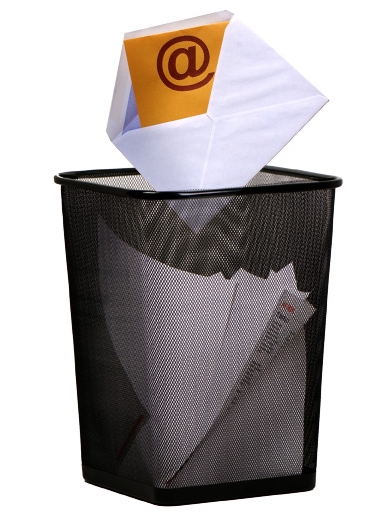 As an email marketer, you already know that some addresses on your list will stop working over time. When a recipient changes jobs, for instance, that previously good address will be deleted, and subsequent emails will bounce back as undeliverable. Other users may change service providers, rendering their previous email addresses useless.
As an email marketer, you already know that some addresses on your list will stop working over time. When a recipient changes jobs, for instance, that previously good address will be deleted, and subsequent emails will bounce back as undeliverable. Other users may change service providers, rendering their previous email addresses useless.
What you may not know, however, is that there are email addresses designed to stop working within a matter of minutes.
These disposable email addresses are on the rise – there are currently more than 2,400 domains that offer them.
What Are Disposable Email Addresses?
Consumers often use disposable email addresses when completing sign-in forms, or to take advantage of special offers. Those disposable addresses are generally used when the owner of a legitimate email address is unsure of the trustworthiness of the site he or she is dealing with. That user may worry about being inundated with spam, so they use a disposable email address instead of a real one.
Others may use semi-permanent disposable email addresses instead. These email addresses do not expire, but they are easily shut down by the owner – with no long-term repercussions. An user, for instance, may open a new Gmail or Yahoo email account, use it to sign up for a few lists, and then abandon it. Users can also sign up for temporary email addresses, which expire automatically, with no action required. Since these addresses are rarely – if ever – checked, it is of no value to the email marketer.
What Are the Risks of Using a List Filled with Such Addresses?
These disposable email addresses present a number of significant risks to the email marketer – risks every email marketer needs to be aware of. For one thing, a list full of disposable addresses is virtually useless, since the chances of those messages reaching the intended recipients is virtually zero. Even if those disposable addresses have not yet expired, the owners are unlikely to check for messages on a regular basis.
Disposable email addresses also reduce the deliverability of the messages, causing bigger problems for the email marketer. Fewer messages get through, more messages are bounced back, and the bounce rate goes up. A high bounce rate can lead to problems with the marketer’s service provider, or even get the marketer branded as a spammer.
What Can Email Marketers Do to Reduce the Risk?
Fortunately, there are some concrete steps email marketers can take to reduce the risks posed by disposable email addresses. Marketers may not be able to stop every risk, but they can greatly reduce the harm these disposable addresses can do.
For example, with SendBlaster PRO you can easily avoid sending your emails to these disposable addresses by adding the list of the most popular domains that provide those services in the “Blacklist” panel (each row must contain one domain). This way no address belonging to those domains will ever be sent a message.
Lists of domains that provide such addresses are widely available, making it easy for email marketers to update their systems (most popular are Mailinator, 10 minute email, Guerrillamail).
It is even more important to get to the heart of the matter and understand why a user might resort to a disposable email address. People use these addresses when they do not fully trust a particularly site, so making your own site trustworthy is essential.
There are a number of things marketers can do to set users’ minds at ease, including providing clickable links to their privacy policies, adding reassurances stating that you will not sell, rent or share addresses with others, and including full contact information – phone number, email address and physical address – on the site.
Treating list members with respect – and respecting their privacy – is the best way to reduce the problem posed by disposable email addresses. The more you can do to make your site stand out, the less you will have to worry about temporary and disposable email addresses.